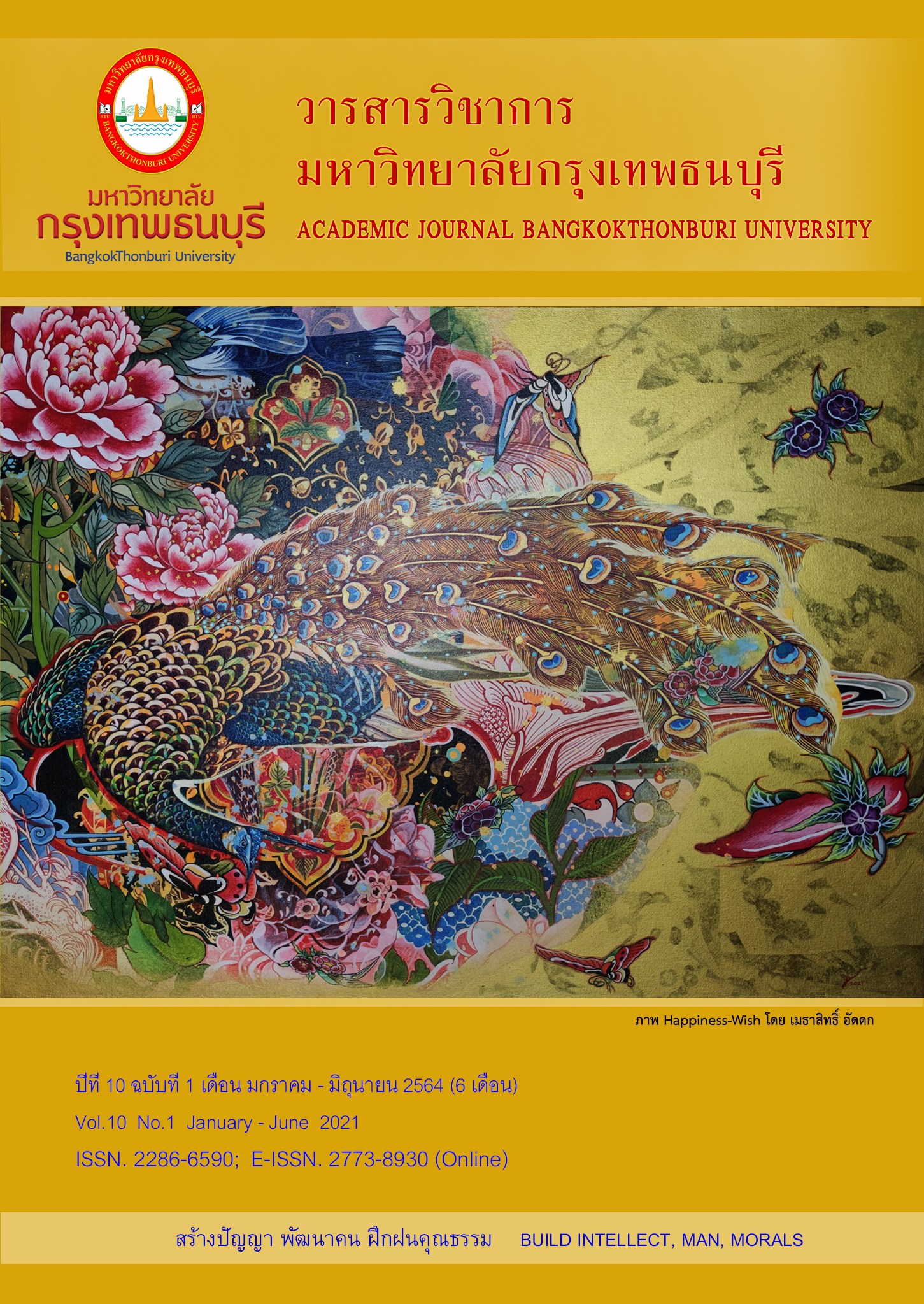The behavior to reduce waste of people in the Maha Sarakham Municipality through Urban Symbiosis Concept for Sustainable Waste Management The behavior to reduce waste of people in the Maha Sarakham Municipality through Urban Symbiosis Concept for Sustainable Waste Management
Main Article Content
Abstract
The objectives of this research are 1. to study and confirm the indicators of waste behavior to reduce waste of people in Maha Sarakham and 2. to assess the behavior to reduce waste of people in Maha Sarakham. Data was collected with a questionnaire from 331 people in Maha Sarakham municipal area. The results found that people in Maha Sarakham willing to cooperate in waste separation by considering whether any waste can be sold or unsold, then sorted out, such as plastic water bottles, glass bottles, cardboard, etc. to sell into the recycle junk shops. Mainly information is obtained from the Maha Sarakham Municipality through the Ministry of Public Health or Village Health Volunteers. The cooperation of people is quite high but behavior to reduce the waste is quite fair. However, the behavior to reduce waste starts with oneself in raising awareness then encourages to their family members and neighbor. The behavior to reduce waste focuses on recycle to non-recycle waste. People prefer using one big plastic bag to several small plastic bags, etc. Also people try to separate/reduce waste and sort the waste before throwing away.
Article Details

This work is licensed under a Creative Commons Attribution-NonCommercial-NoDerivatives 4.0 International License.
References
กรมควบคุมมลพิษ. (12 สิงหาคม 2561). ข้อมูลตัวชี้วัด “การใช้ประโยชน์จากขยะมูลฝอย”. (สำนักงานนโยบายและแผนทรัพยากรธรรมชาติและสิ่วแวดล้อม, ผู้อำนวยการสร้าง, และ กระทรวงทรัพยากรธรรมชาติและสิ่งแวดล้อม) เข้าถึงได้จาก ฐานข้อมูลเพื่อการรายงานสถานการณ์คุณภาพสิ่งแวดล้อมของประเทศไทย: http://www.onep.go.th/env_data/ 2016/01_54/
สภาขับเคลื่อนการปฏิรูปประเทศ. (2557, มีนาคม 31). ปัญหาและมาตรการเกี่ยวกับขยะในญี่ปุ่น. (กลุ่มงานภาษาญี่ปุ่นและเกาหลี, Ed.) Retrieved from สภาขับเคลื่อนการปฏิรูปประเทศ: https://www.parliament.go.th/ewtadmin/ewt/admin_souvanee/ewt_dl_link.php?nid=338&filename=index
สำนักบริหารทะเบียน. (2561). ข้อมูลประชากรจำแนกตามจังหวัด. กรุงเทพฯ : กรมการปกครอง กระทรวงมหาดไทย.
อนงค์ฤทธิ์ แข็งแรงและคณะ. (2549). แนวทางการจัดการขยะมูลฝอยของจังหวัดมหาสารคาม. วารสารวิทยาศาสตร์และเทคโนโลยี มหาวิทยาลัยมหาสารคาม, 1(25), 19-24.
Chertow, M.R. (2007). "Uncovering" industrial symbiosis. Journal of Industrial Ecology, 11, 11-30.
Economic Inteligence Center. (2560, กันยายน 15). Circular Economy: พลิกวิกฤติทรัพยากรด้วยระบบเศรษฐกิจใหม่. (ป. อานวยสิทธิ์, Producer, & The Siam Commercial Bank Public Company Limited) Retrieved ธันวาคม 2561, from SCB: https://www.scbeic.com/ th/detail/product/3831
Ellen MacArthur Foundation. (2012). Economic and economic and business rotation for an accelerated transition. Towards the Circular Economy, 1, 1-98.
European Commission. (2018). Preparing for the withdrawal of the United Kingdom from the European Union on 30 March 2019: Implementing the Commission’s Contingency Action Plan. Retrieved from http://ec.europa.eu/ environment/circular-economy/_en.htm
Loizidou, M. (2015). Waste Management and Symbiosis for Waste Valorization. Waste and Biomass Valorization, 6(5), 623-624.
Phachern Thammasarangkoon. (2559). ปัญหาการกำจัดขยะต้องจัดการเชิงบูรณาการ ตอนที่ 2. (P. Thammasarangkoon, Compiler) Retrieved from https://www.gotoknow.org/posts/604969
United Nations Environment Programme. (n.d.). Green Economy. Retrieved December 2018, from UN Environment: https://www.unenvironment.org/explore-topics/green-economy
Van Berkel et al. (2009). Industrial and urban symbiosis in Japan: analysis of the eco-Town. Journal of Environmental Management, 90, 1544-1556.
Yamane, T. (1973). Statistics and Introductory Analysis. New York : Haper International.


